#Kelly Criterion
Text
Trade management by Kelly Criterion
0 notes
Text
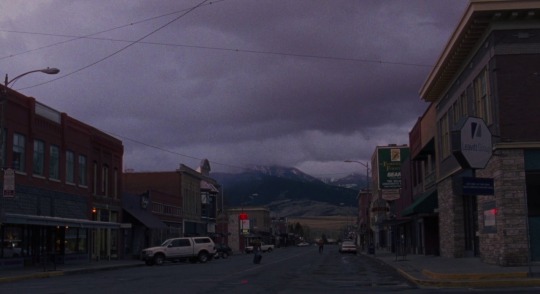

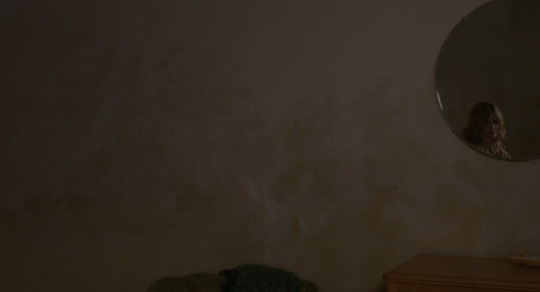
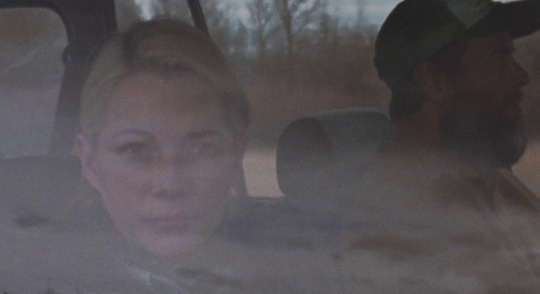

Certain Women (2016) - Kelly Reichardt
I just knew if I didn't start driving I wasn't going to see you again.
#certain women#kelly reichardt#lily gladstone#kristen stewart#laura dern#montana#film#film still#quote#criterion channel#watched in st louis#watched in november 2023
135 notes
·
View notes
Text
TWIN PEAKS: FIRE WALK WITH ME
Beyond the portrait
Laura Palmer’s final days
Cracks in her “perfect”
youtube
#twin peaks fire walk with me#twin peaks#fire walk with me#random richards#poem#haiku#poetry#haiku poem#haiku poetry#haiku form#poetic#criterion collection#david lynch#Sheryl Lee#ray wise#madchen amick#dana ashbrook#phoebe augustine#david bowie#laura palmer#Eric dare#miguel ferrer#heather graham#kyle maclachlan#chris isaak#moira kelly#harry dean stanton#keifer sutherland#Robert Engels#mark frost
8 notes
·
View notes
Text
2 notes
·
View notes
Text
018 Shownotes:
Shadow Grove Brewing - the place where Casey saw a magician
Werner Herzog on Skateboarding
Carlos López Estrada's Robin Hood
David Lowery's Pete's Dragon trailer
Friend of the podcast, Luke's, review of The Green Knight
Lamb (2021)
Blue Eye Samurai Pilot Episode
Glen Powell in The Dark Knight Rises
Tim Urban's A.I. Revolution Blog Post
Patrick H. Willems - AI is not the Future. It's a Grift
Criterion Casey - The Naked Kiss (1964)
The Naked Kiss (1964) Original Trailer
Laura (1944) Original Trailer - one of Ari's favorite film noirs
Criterion - How do I Download Videos to my iPhone or iPad
Get Started with Kanopy with Your Library Card
Explore L.A. with Discover & Go - Los Angeles Public Library
And with Him Came the West trailer - one of Casey's documentary choices
Kiss the Blood Off My Hands (1948) trailer
I Got Rhythm from An American in Paris (1951)
Freddy Got Fingered (2001) trailer
The Sign of the Ram (1948)
Ari fucked up - the ongoing practical joke was between Grace Kelly and Alec Guinness, not Cary Grant
Kevin Durand as Elon Musk
0 notes
Text
'The File on Thelma Jordon' – Barbara Stanwyck plays her mark on Criterion Channel
Robert Siodmak’s The File on Thelma Jordon (1950) is one of the most low key film noir dramas of its era.
Barbara Stanwyck in fine form as a gentle seductress who targets assistant D.A. and married man Cleve Marshall (Wendell Corey), playing into his self-pity during a drunken night out. When she becomes the prime suspect in the murder of her aunt, a high society matron who names her in her…
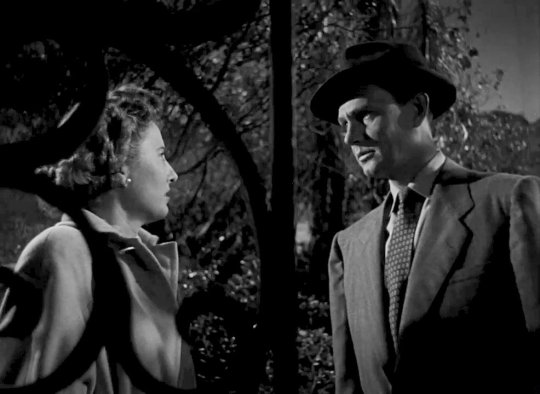
View On WordPress
#1950#Barbara Stanwyck#Blu-ray#Criterion Channel#DVD#Joan Tetzel#Paul Kelly#Richard Rober#Robert Siodmak#Stanley Ridges#The File on Thelma Jordon#VOD#Wendell Corey
0 notes
Text


Currently Watching
[Hal Hartley Retrospective]
THE UNBELIEVABLE TRUTH
Hal Hartley
USA, 1989
-
Bonus Shorts
THE CARTOGRAPHER'S GIRLFRIEND (1987)
AMBITION (1991)
OPERA NO. 1 (1994)
IRIS (1994)
#watching#Hal Hartley#The Criterion Channel#Robert John Burke#Matt Malloy#Edie Falco#Adrienne Shelly#Bill Sage#Chris Cooke#Kelly Reichardt#Julia McNeal#debut films
1 note
·
View note
Text
So you saw fell in love with Lily Gladstone in Killers of the Flower Moon and now you want her on your screen as much as possible? I’m here to help.

Certain Women directed by Kelly Reichardt
This was the first time I saw Lily Gladstone in anything and I screamed about her specifically for days. The film is segmented into three stories about women living in the northwestern plains region of the US. All three segments are good, but Lily Gladstone’s is by far my favorite. She plays a ranch hand who starts sitting in on a night school law class when she develops a crush on the teacher, played by (bonus!) Kristen Stewart.
Certain Women is streaming on The Criterion Channel, AMC+, and Kanopy (Kanopy is free!). It is also available to rent on the major platforms.
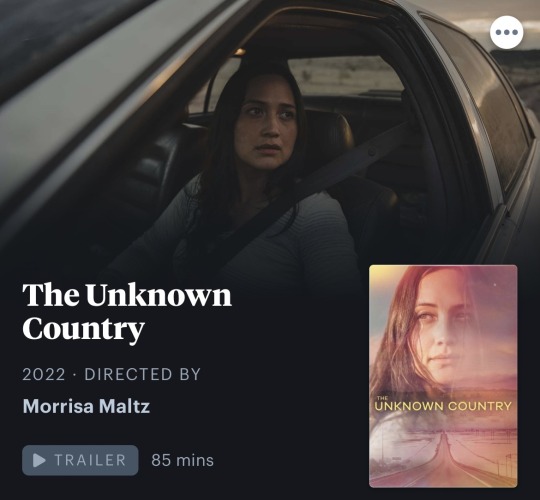
The Unknown Country directed by Morrisa Maltz
This movie is stunning. Think Nomadland but even more stripped down. Lily Gladstone plays a character on a roadtrip to reunite with her estranged family after the death of her grandmother. Along the way she tries to learn more about who her grandmother was in life and reconnect with her memory. A lot of the film is unscripted, and breathtaking shots of the western US landscape punctuate the brief encounters she has at each stop on her journey.
The Unknown Country is available to rent on the major platforms such as Apple TV, Amazon, and YouTube.

Quantum Cowboys directed by Geoff Marslett
This one’s for the multiverse fans. A really fun romp that might make your head hurt if you think about it too hard. Lily Gladstone plays a character in the 1870’s southwest who encounters a pair of travelers stuck in a time loop (sort of). She enlists their help (sort of) in a plan to recover land that was taken from her and in return helps them in their attempt to break their cycle. Most of the film is rotoscope animation, so it’s a completely different type of a performance from Lily Gladstone. I had the extraordinary luck of meeting her at a festival screening last year and they said it was such a fun deviation from their usual hyper realistic work.
Quantum Cowboys is available to rent on major platforms such as Apple TV, Amazon, and YouTube.

Fancy Dance directed by Erica Tremblay
The most recent Lily Gladstone film to blow me away, and maybe my favorite film of 2023. Lily Gladstone plays a character who has been trying to find her missing sister while simultaneously providing care for her sister’s daughter. When it appears she may lose custody, the two hit the road to search for the teen’s mother. It’s sad and sweet and beautiful. I have to warn that the subject matter is heavy and all too real but that’s why it’s an important story. It’s about something that is so pervasive, yet people outside of the community affected turn a blind eye to it.
Fancy Dance will be distributed by Apple this year, exact dates tba. It will be available in theaters and on Apple TV+. Erica Tremblay previously directed Lily Gladstone in the short film Little Chief, which can be found on Vimeo.
#lily gladstone#killers of the flower moon#certain women#the unknown country#quantum cowboys#fancy dance#little chief#these are just the works that really showcase her skill in my opinion#you can also find her in smaller roles in first cow reservation dogs walking out and others#she is unmatched as an actor no matter how small the role#i could go on
851 notes
·
View notes
Text
The Last-Minute Sci-Fi Gift Guide
There's only one thing worse than procrastinating on getting gifts for your loved ones, and that's procrastinating on putting together a guide to help out everyone else with all those gifts. It's Dec 12, so you can decide for yourself which I'm doing.

Art book: Worlds Beyond Time, $32
If you follow this blog, you might have heard of this one. I published Worlds Beyond Time: Sci-Fi Art of the 1970s this year after five years of work on it, and I think it's really good! 400+ images, 100+ artists, with lots of fun art history and jokes.
Also, it's just $20 right now if you order through my publisher and use the code SKIPTHELINE! Cheapest it's ever been!

Card game: Coup, $14
In this "social deduction" card game, you play as a government official in a future dystopia who needs to backstab their way into power. Everyone starts out with just two cards in this bluffing game, so the tide can turn pretty quick when players start assassinating each other's cards. The fast pace makes it a good gift for someone who loves spies but thinks they don't like card games.

Game to play over Zoom: Bad Spaceships, $3
If a bluffing game stresses you out, try Bad Spaceships: It's a collaborative world-building game in which you roll dice to see what area of your spaceship connects to another, forcing you to spitball exactly why this is the case. As the game puts it, you might fix the hull by playing Tetris, or charge your weapons in the swimming pool. You're basically getting weird prompts to tell a story that can evolve over the course of the game.
It's such an indie game that it comes as PDFs you download from itch.io, but you can play it just as well over Zoom, if you're looking for an excuse to catch up with your old digital nomad college friend.

Movies/TV: Streaming service gift card
Gift cards are all well and good, but you can personalize them by recommending a few of your favorite shows as well. I suggest:
Hulu: Cowboy Bebop
Apple TV+: Severance
Criterion Channel: Ravenous, Paprika, Strange Days
Paramount+: Yellowjackets
Amazon Prime: The Devil's Hour
But to be honest, this entry is just an excuse to talk about the new Max show Scavenger’s Reign. Inspired by the work of French artist Moebius and with a clear debt to famed 70s animated film Fantastic Planet, this stylish sci-fi show features a bunch of humans trying to survive on a beautiful but hostile alien world. Perfect for lovers of fictional nature.

Vintage sci-fi
This Etsy shop has some good stuff, like the 1971 Frank Kelly Freas NASA poster above, a bit of history that I even mentioned on page 167 of my art book.

Penguin science fiction postcards, $28
These postcards have a ton of very cool sci-fi covers I've blogged in the past – great value if you want a lot of art for a low cost.

Meteorite pendant necklace, $34
I think we all know what kind of rock your loved ones need around their neck: A chunk of meteorite straight out of the 1576 Argentinan meteorite fall.
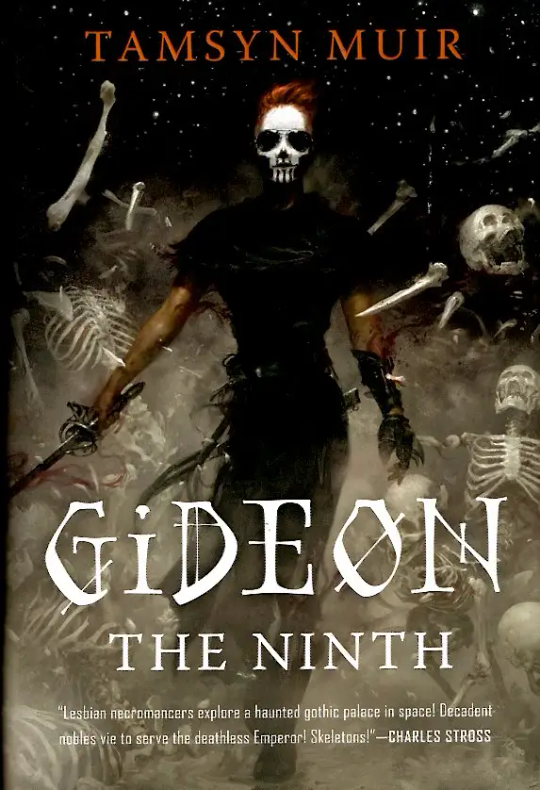
Book recs
For astronauts: Packing for Mars by Mary Roach, The New Guys: The Historic Class of Astronauts That Broke Barriers and Changed the Face of Space Travel by Meredith Bagby
For comedians: Gideon the Ninth by Tamsyn Muir, Even Greater Mistakes: Short Stories by Charlie Jane Anders
For sleuths: Six Wakes by Mur Lafferty, Drunk on All Your Strange New Words by Eddie Robson
For crafters: Knits of Tomorrow: Toys and Accessories for your Retro-Future Needs
For the resistance fighters: The Light Brigade by Kameron Hurley, An Unkindness of Ghosts by Rivers Solomon
For slasher movie fans: Clown in a Cornfield by Adam Cesare

Syd Mead "Biomorph Vehicle" button down shirt, $49
T-shirts aren't classy enough for the world's coolest visual futurist, Syd Mead. I haven't actually bought this incredibly odd shirt, but I really need to.

Art prints (and more) from 70s sci-fi artists
Artist shops can be surprisingly hard to track down on the internet, but here's a short list of ones I've come across. All of these artists are featured in my book (except one), so you can read up on them before you commit to a print.
Michael Whelan
John Harris
Syd Mead
Don Maitz
David B Mattingly
Peter Andrew Jones - Jones was one of just a few artists who declined to be included in my art book, but he has a distinct, colorful style that I would have loved to have featured!
Finally, here's one extra bonus, just for everyone who made it to the end of this article: The UK-based educational charity Centre for Computing History sells three big officially licensed John Harris posters featuring these three artworks, famous for their use as covers for Sinclair programming manuals.

It's a great deal that I've never seen mentioned anywhere, and Harris' work has a timeless quality that makes it great for an unassuming wall decoration. If you're outside the UK, the shipping costs will be a pain, but there's no better deal for a classic sci-fi poster.
254 notes
·
View notes
Text
Charlie Kelly and Fetal Alcohol Spectrum Disorder: Part One
What is Fetal Alcohol Spectrum Disorder (FASD) and how does it apply to Charlie Kelly?
Fetal Alcohol Spectrum Disorders are a group of complex conditions that occur in people who were exposed to alcohol before birth. People with FASD may have distinct physical features as well as neurological differences that impact their behavior. Charlie Kelly meets criteria for having a Fetal Alcohol Spectrum Disorder based on his observable behavior and family history.
There are several different conditions grouped under FASD, and the terminology is kind of a mess. The type of FASD Charlie has can be called Alcohol-Related Neurodevelopmental Disorder, Neurodevelopmental Disorder Associated with Prenatal Alcohol Exposure, Other Specified Neurodevelopmental Disorder, Fetal Alcohol Effects, or simply FASD. Charlie does not meet the criteria for Fetal Alcohol Syndrome, because you need specific physical features to be diagnosed with that one.
For the purposes of this post series, I've used the DSM 5-TR provisional criteria for Neurodevelopmental Disorder Associated with Prenatal Alcohol Exposure, plus some supplemental notes. Fulfillment of this criteria would qualify him for a diagnosis of FASD.
Criterion A. More than minimal exposure to alcohol during gestation, including prior to pregnancy recognition.
We know that Mrs. Kelly is an alcoholic, and that she tried to get an abortion, but it "didn't take." It's highly likely that she drank while pregnant, knowingly or unknowingly, based on her medical history and Charlie's behavior patterns.
Criterion B3. Impaired neurocognitive functioning as manifested by impairment in learning:
Charlie has two learning disabilities: dyslexia and dysgraphia. He really, really struggles to read. Dennis actually names the dyslexia in "The Gang Runs for Office." He also struggles with writing. Words are often out of order or missing altogether. Words that aren't spelled exactly the way they're pronounced are usually misspelled. He needs help to write something intelligible. The picture language he has is actually a great example of him trying to adapt. The issue is obviously not a lack of effort.
B5. Impaired neurocognitive functioning as manifested by impairment in visual-spatial reasoning:
Charlie struggles with telling left from right, as seen in "A Very Sunny Christmas." He also can't use a map, as seen in "The Gang Goes to a Waterpark." I also suspect that visual-spatial difficulties are part of the reason Charlie stops driving after season 3. We can see in "The Maureen Ponderosa Wedding Massacre" that he doesn't know how to avoid obstacles or operate a car when stressed, which would make driving difficult and unsafe.
See here for part two, which contains the remainder of the criteria and the supplemental notes.
24 notes
·
View notes
Photo










Fiat 600 Jungla
The Jungla, Italian for “Jungle,” was designed at the request of Fiat supremo Gianni Agnelli who wanted a vehicle to compete with the popular Mini Moke, and perhaps to win the company some military contracts. Just 3,200 or so were made between 1965 and 1974. Emphasizing simplicity as a design criterion, the Fiat Jungla boasted a utilitarian, squared-off metal body, providing space for four adults and up to 40 kilograms of luggage, cargo, or beach equipment. Leveraging the mass production of the Fiat 600, a popular and affordable car in Italy at the time, the Jungla was based on the same platform to ensure cost-effective, efficient production and broad parts availability.
Powering the vehicle was a 767cc inline-four cylinder, overhead valve engine borrowed from the Fiat 600, with power transmitted through a 4-speed manual gearbox to the rear wheels. Despite its modest output of 32 bhp, the low curb weight of 578 kilograms allowed for a respectable top speed of 95 km/h, depending on the load. Though of course, it woulds take a driver with significant courage to actually achieve that speed on Italy’s twisting coastal roads.
While initially intended for military use, the Jungla only saw very limited adoption by the Italian armed forces. That said, it found favor with the Italian Forestry Service and the Carabinieri who ordered some for specialist roles.
Interestingly, the Savio Jungla became particularly popular among affluent vacationers in France, Italy, and Monte Carlo. With their open-top configuration, these four-seaters offered a simple means of transportation for short trips from their hillside manor houses to the waterfront.
Notably, the Kelly 600 variant of the Fiat Jungla gained significant recognition. This special edition featured a tasseled folding fabric roof, woven rattan seats, and other rattan accents. Produced by a Fiat dealership based in Monaco, original examples of the Kelly 600 have become highly sought-after and valuable collector’s items.
To shield occupants from the sun, many of these cars were fitted with simple canvas tops as mentioned above, while rattan seats were often preferred for their ability to accommodate individuals who were still damp from swimming in the sea.
Similar to the Savio Jungla, the Mini Moke and the French sibling, the Citroën Méhari, were also commonly seen at waterfront establishments during that era. The Méhari bore a striking resemblance to the Jungla, leading many to speculate that it drew direct inspiration from the Italian vehicle, appearing on the market just three years later.
44 notes
·
View notes
Text
Stuff about the Kelly criterion
I’ve been off Tumblr for a little while, but there’s apparently been some discussion about the Kelly criterion, a concept in probability, in relation to some things Sam Bankman-Fried said about it and how that relates to risk aversion. I’m going to do what I can to explain some aspects of the math as I understand them.
The Kelly criterion is a way of choosing how much to invest in a favorable bet, i.e. one where the expected value is positive. The Kelly criterion gives the “best” amount for a bunch of different senses of “best” in a bunch of different scenarios, but I’m going to restrict to one of the simplest ones.
Suppose you have some bet where you can bet whatever amount of money you want, you have probability p of winning, and you gain b times the amount you bet if you win. (Of course, if you lose, you lose the amount you bet.) Also suppose you get the opportunity to make this bet some large number n of times in a row, you have the same probabilities and payoff rules for each of them, and they’re independent events from each other. The assumption that all of the bets in the sequence have the same probabilities and payoff rules is made here to simplify the discussion; the basic concepts can still hold when there are a mix of different bets, but it’s a lot messier to state things and reason about them.
Also suppose that your strategies are limited to choosing a single quantity f between 0 and 1 and always betting f times your total wealth at every step. This is a pretty big restriction, and it too can be relaxed at the cost of making things much messier. But even with this restriction we’ll be able to compare the strategy prescribed by the Kelly criterion to the “all-in” strategy of always betting all of your money.
So what is the best choice of f? The Kelly criterion gives an answer, but the sense in which it’s the “best” is one that it’s not obvious should apply to any choice of f. I’ll state it here but keep in mind that until we’ve done some more calculation, we shouldn’t assume that that there is any choice of f which is the best in this sense.
The Kelly criterion gives a choice of f such that, for any other choice of f, the Kelly criterion produces a better result than the other choice with high probability. Here “high probability” means that the probability that the Kelly choice outperforms the other one goes to 1 as n goes to infinity.
So why is this possible?
Let Xi be the random variable representing the ratio of the money you have after the ith bet to the amount you had before it. So your final wealth is equal to your starting wealth times the product of the Xi for i from 1 to n. Also these Xi are independent identically distributed variables. (We can describe their distribution in terms of p, b, and f but the exact details aren’t too important to the concepts I want to communicate.) Sums of random variables have some nicer things that can be said about them than products, so we take the logarithm. The logarithm of your final wealth is the log of your starting wealth plus a sum of n independent variables log(Xi).
Now, the expected value of that sum is n times the expected value of one of the individual summands, and the (weak) law of large numbers tells us that with high probability the actual value of the sum will be close to that. (To be rigorous about this: For any constant C, the probability that the sum will be further than Cn away from its expected value goes to 0 as n goes to infinity.) So for any betting strategy f, define r(f) to be the expected value of log(Xi). So if we have any two strategies f and f’, the log of your final wealth following strategy f minus the log of your final wealth following strategy f’ will be about r(f)n-r(f’)n, and so will be positive with high probability if r(f)>r(f’). (If you understood the rigorous definition in the previous parenthetical, you should be able to make this argument rigorous as well.) Thus with high probability the log of your final wealth will be greater using strategy f than strategy f’. Since log is an increasing function, this is equivalent to saying that with high probability, f will result in a greater final wealth than f’.
Then if you pick f such that r(f) is maximized, then for each other choice of f, you’ll outperform that choice with high probability. This is what the Kelly criterion says to do. Maximizing r(f) can be equivalently described by saying that at each bet, you bet the amount that maximizes the expectation of the logarithm of the amount you’ll have after the bet.
A pitfall to avoid here: Although the log of the final wealth can be said to be “about” a certain value with high probability, we can’t really say that the final wealth is guaranteed to be “about” anything in particular. Differences that we can consider to be negligibly small when we’re looking at the logarithm can balloon to very large differences when we’re looking at the actual value, and it is very possible for one experimental trial using a given strategy to yield something many times larger than another trial using the same strategy where you’re a little less lucky.
The Kelly criterion is not the strategy that maximizes the expected amount of money you have at the end. The best strategy for that goal is that is the one where you put all of your money in on every bet. This isn’t inconsistent with the previously stated results; in almost all cases the Kelly criterion outperforms the all-in strategy (because the all-in strategy loses at some point and ends up with no money). But in the very unlikely event that you win every single one of your bets, you end up with an extremely large amount of money, so large that even when you multiply it by that very small probability you get something that’s larger than the expected value of any other strategy.
What if, instead of trying to maximize the expected dollar payoff, you have some utility function of wealth, and you’re trying to maximize the expected value of that? Well, it depends what your utility function is. If your utility function is the logarithm of your wealth, the Kelly criterion maximizes your expected utility; in fact, in this case we don’t even need to assume n is large or invoke the law of large numbers. But going back to the case of large n, there are a lot of other utility functions where the Kelly criterion is also optimal. Think about it like this: the Kelly strategy outperforms any other strategy in almost all cases; the only situation where you might still prefer the other strategy is if in the tiny chance that you get a better outcome, your outcome is so much better than it makes up for losing out the vast majority of the time. So if your utility function grows slower than the logarithm, you care even less about that tiny chance of vast riches than you would if you had a logarithmic utility function, so the Kelly criterion continues to be optimal. More generally, I think it can be shown that when comparing the Kelly criterion to some other strategy, the probability of that other strategy doing better than it decays exponentially in n. Since the amount the other strategy can obtain in that tail situation grows at most exponentially in n, this implies that as long as your utility function grows slower than nε for all ε>0, you won’t care about the tail so the Kelly criterion is still optimal. If your utility function grows faster than that, i.e. if there is some ε>0 such that your utility function grows faster than nε, then I think for sufficiently favorable bets, all-in comes out ahead again.
Okay but how does this all of this apply in the real world? Honestly I’m not sure. If your utility function is your individual well-being, it seems very likely to me that that grows logarithmically or slower; if what you care about is maximizing the amount of good you do for the world by charitable donations, I think there is some merit to SBF’s argument that you should treat that utility as a linear function of money, at least up to a certain point. But even he acknowledged that it drops off significantly once you get into the trillions, and since the reasons for potentially preferring riskier strategies over the Kelly criterion hinged on exponentially small probabilities of exponentially large payoffs, I think that that trillion-dollar regime might actually be pretty relevant to the computation.
Really any utility function should be eventually constant, but in that case the Kelly criterion ceases to be optimal in the way discussed before. For large enough n, it will get you all the money you could want, but so will any other strategy other than all-in and “never bet anything”. Obviously this is not a good model of how the world works. To repair this we probably want to introduce time-discounting, but to make sense of that we need to have some money getting spent before the end of the experiment rather than all of it available for reinvesting, and by this point things have gotten far enough away from the original scenario that it’s hard to tell how relevant the conclusions from it even are. It seems like it’s a useful heuristic in a pretty wide range of scenarios? But I have no idea whether SBF was right that he was not in one of them.
To be clear, none of this is to excuse his actions; whether or not he should have been applying the Kelly criterion, I think “committed billions of dollars of fraud” does a better job of capturing what he did wrong than “was insufficiently risk-averse”.
#tumblr allowed me to use subscripts in the post editor and they show up fine on my blog but not on the dash#math
68 notes
·
View notes
Text




Certain Women (2016) - Kelly Reichardt
It was nice of you to bring the horse.
#certain women#kelly reichardt#lily gladstone#kristen stewart#film#film still#quote#watched in st louis#criterion channel#horse#lgbtq#unrequited love#watched in november 2023
87 notes
·
View notes
Text
100 BOYFRIENDS MIXTAPE:
Jean soaking in tub
Man shit talking on the phone
About ex boyfriends
vimeo
#100 Boyfriends mixtape#brontez purnell#Pablo A. Escobar#random richards#poem#haiku#poetry#haiku poem#poets on tumblr#haiku poetry#haiku form#poetic#criterion channel#short film#Manuel Rodrigues#Kelly Dezart Smith#lbgtqia#lbgtq#Vimeo
1 note
·
View note
Text
#three the hard way#film#review#criterion channel#gordon parks jr.#jim brown#fred williamson#jim kelly
1 note
·
View note
Text
Morricone Youth — Battleship Potemkin (Country Club)

Sergei Eisenstein’s Battleship Potemkin is a landmark in early cinema, a 1925 silent film of epic scale and ambition, which chronicles a late Tsarist-era mutiny aboard ship that strikes a chord and ignites a full-scale rebellion in the port city of Russia. It is well worth watching, if only for the stunning “Odessa steps” sequence, where the Tsar’s army ruthlessly guns down civilians in sympathy with the striking sailors. The images of a mother begging for her wounded child’s life or a baby in a carriage bumping headlong down the stairs are striking and memorable—and they have special resonance now, when Odessa is again under siege by a Russian army with few qualms about collateral damage.
The film has had a number of scores over the years, the original by Edmund Meisel, one from 1950 by Nikolai Kryukov , and a widely circulated 1975 50th anniversary edition incorporating symphonies by Dmitri Shostakovich (that’s the version currently on the Criterion Channel). Eisenstein himself hoped that his movie would be rescored every 20 years, so that its sound would remain relevant to new audiences.
Enter, then, Morricone Youth, a New York City-based orchestra dedicated to live scoring classic films. The ensemble, a sort of bus man’s holiday for musicians in other bands, has performed music for films including David Lynch’s Eraserhead, Alfred Hitchcock’s The Lodger and George Romero’s Night of the Living Dead. The band, which is headed by Devon E. Levins, regularly performs its scores while the film is running in select theaters across the country. It is in the process of recording and releasing these scores. Battleship Potemkin is the latest.
On listening to this excellent soundtrack, with its languid, East European waltzes, its stirring snare-shot battle sequences, its antic re-enactments of rebellion and eventual triumph, you might regret not having the opportunity to hear this music in its rightful setting, a movie theatre. And yet, the music itself is evocative enough to hold your attention. “Vakulinchuk’s Dream” with its bell-like keyboard lines and its soaring trumpet is full of eerie yearning, exactly the sort of thing to embody a sailor’s longing for equality. The syncopated lurch of “Giliarovosky Is Watching,” with its sinuous, near-tango-ing tainted sensuality insinuates danger and trickery. “Cossacks Charge,” the music for that Odessa Steps imagery, snaps to attention on military drum rolls and advances relentlessly on piano motifs. And “Funeral” with its haunting, disembodied voices, is lovely and heartbreaking, exactly as it ought to be.
All of which is meant to say, yes, it’s probably better with the movie, but it’s pretty great with just your speakers and your imagination, too.
Jennifer Kelly
#morricone youth#battleship potemkin#country club#jennifer kelly#albumreview#dusted magazine#film score#silent film#odessa steps
7 notes
·
View notes